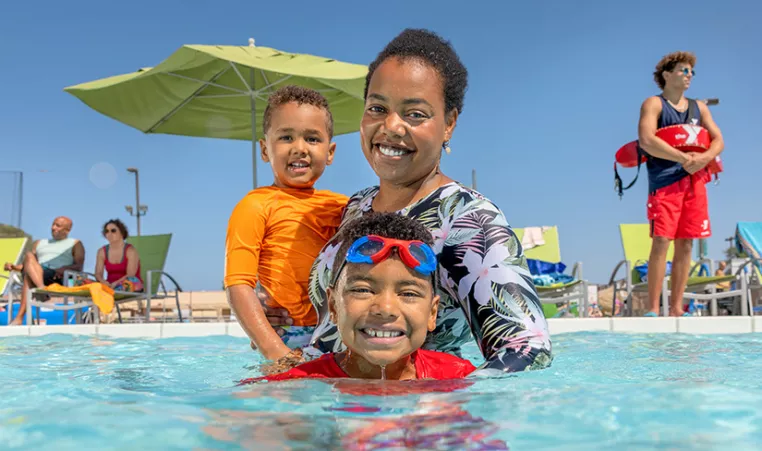
How to Stay Safe In & Around The Water This Summer
Swimming is a great recreational sport for people of all ages. It's essential to know how to stay safe while in the water.
Swimming is a great physical exercise. It is an excellent low-impact cardio workout that builds strength, flexibility and balance. Being comfortable in the water is a necessity in life. Water is all around us, and people of all ages need to know what to do if a problem arises in or around water.
According to the Centers for Disease Control and Prevention, drowning is the number one cause of injury-related death for children ages 1-4, and the second leading cause of death for children ages 5-14.
Water Safety Tips
- Always ensure that a trusted parent or guardian accompanies children. Reassure them and let them know you are there for their safety.
- Don’t engage in breath-holding activities. Children should not hold their breath for a prolonged amount of time while swimming, as this can cause drowning and several severe side effects.
- Wear a life jacket. Inexperienced or non-swimmers should wear a Coast Guard-approved life jacket as an extra layer of protection in the water.
- Start with simple exercises to introduce a beginner to the water.
Swim Lessons For All Ages & Skill Levels
Our top-notch, CPR and first aid certified instructors lead swim lessons. The YMCA has been America's leading swim instructor for 100+ years and is the most accessible aquatic community resource.
Swim Starters
Accompanied by a parent, guardian or caregiver, young swimmers learn to be comfortable in the water and develop swim readiness skills with fun, confidence-building experiences. Adults learn water safety, drowning prevention and the importance of supervision.
Swim Basics
Swimmers learn personal water safety and achieve basic swimming competency by learning two benchmark skills:
- Swim, Float, Swim: Sequencing front glide, rolling, back float, rolling and front glide
- Jump, Push, Turn, Grab: Sequencing jumping in, pushing off, resurfacing, turning around, holding onto the wall and exiting the water.
Swim Strokes
Having mastered the fundamentals, students learn additional water safety skills, build stroke technique, develop skills that prevent chronic disease, increase social-emotional and cognitive well-being and foster a lifetime of physical activity.
Pathways
Students build confidence, cultivate their passion and stay active through specialized tracks. Prerequisite: Demonstrate skill level competency equivalent to (or have passed) Level 6.
Learning how to swim builds confidence. When a beginner masters swimming skills, they feel more comfortable around water, and knowing what to do provides peace of mind. Knowing how to swim is an important, life-long skill.